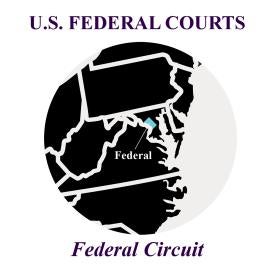California Institute of Technology v. Broadcom Limited, No. 20-2222 (Fed. Cir. Feb. 4, 2022) (CalTech) involved an appeal from a district court patent infringement dispute. Nested within the Federal Circuit’s largely fact specific decision, however, is the answer to a far broader question of significant importance to practitioners at the PTAB: what exactly is the scope of IPR estoppel?[1] The Federal Circuit settled the issue, finding that estoppel applies to “to all claims and grounds not in the IPR but which reasonably could have been included in the petition,” and expressly overruled Shaw Industries Group, Inc. v. Automated Creel Systems, Inc., 817 F.3d 1293 (Fed. Cir. 2016) (Shaw) in light of SAS Institute, Inc. v. Iancu, 138 S.Ct. 1348 (2018) (SAS).
IPR Estoppel and Shaw
The America Invents Act gave patent challengers a new avenue to raise invalidity issues through inter partes review, but also recognized the potential for parallel IPR and district court proceedings regarding the exact same invalidity issues. To address such scenarios, the act included an estoppel provision, codified as 35 U.S.C. § 315(e)(2). That provision precludes a petitioner who receives a final written decision on any patent claim in an IPR from asserting that same claim is invalid based on “any ground that the petitioner raised or reasonably could have raised during that inter partes review.” (Emphasis added.) So, Congress essentially struck a bargain with petitioners: if you decide to use an IPR proceeding for your invalidity challenge, you do not get a second bite at the apple in district court.
This seemingly straightforward language was thrown into question by the Federal Circuit’s 2016 Shaw decision. At the time, the PTAB had a practice of partial institution of IPRs, so grounds could fall into three categories for an instituted petition: 1) petitioned, instituted grounds, 2) petitioned, non-instituted grounds, and 3) non-petitioned grounds. This begged the question of which categories of grounds were subject to estoppel under § 315(e)(2)? In Shaw, the Federal Circuit addressed the second category (petitioned, not instituted grounds), holding that estoppel did not apply because the IPR “does not begin until it is instituted. 817 F.3d at 1300. The Court thus reasoned those petitioned but not instituted grounds were not raised, and could not reasonably have been raised, “during” that IPR. Id.
While this decision resolved things clearly for the first and second categories, it created a question that Shaw itself did not resolve: what about the third category, non-petitioned grounds?
The Post-Shaw Circuit Split and SAS
As the Court in Caltech noted, the post-Shaw unanswered question—whether estoppel also applies to non-petitioned grounds—created a circuit split. Several district courts determined that estoppel should still apply to those grounds that were not raised in the petition but could have been, reasoning that a counter rule would render the “reasonably could have raised” language meaningless. Others, unable to reconcile that with Shaw’s reasoning that the IPR did not begin until institution, found estoppel could not apply since those grounds could not have been added once the petition was instituted.
The Supreme Court’s 2018 decision in SAS did not address this question, or estoppel at all, but did cut at the root of this split. The question in Shaw—whether petitioned, not instituted grounds were estopped—was only possible because of the PTAB’s practice of partial institution. SAS threw out that regime, finding that the PTAB did not have the power to pick and choose the grounds on which to institute an IPR—either the whole petition was instituted, or the whole petition was denied. After SAS, many district courts recognized that there was an inherent contradiction between SAS and Shaw. But since Shaw was not expressly addressed in SAS, it remained an open question whether Shaw was still controlling law, and what it meant for non-petitioned grounds.
CalTech Resolves the Split
In CalTech, the district court granted summary judgment of no invalidity based on IPR estoppel. In doing so, the district court interpreted 35 U.S.C. § 315(e)(2) as precluding parties from raising invalidity arguments at trial that they reasonably could have raised in their IPR petitions. Apple and Broadcom challenged that reasoning on appeal.
The Court highlighted the history of Shaw, the circuit split, and the more recent Supreme Court decision in SAS. The Court concluded that because of the statutory interpretation in SAS—that the petition defines the scope of the litigation—any ground that could have been raised in a petition is a ground that reasonably could have been raised ’during inter partes review. Recognizing that Shaw could not be reconciled with SAS, the Court overruled Shaw and “clarif[ed] that estoppel applies not just to claims and grounds asserted in the petition and instituted for consideration by the Board, but to all claims and grounds not in the IPR but which reasonably could have been included in the petition.”
Interestingly, this case does present an unusual procedural question. The three-judge panel in this case stated explicitly they were “overrul[ing]” Shaw. This is unusual, as Shaw is a Federal Circuit decision. Ordinarily, for the Federal Circuit (or any appellate court) to overrule its own precedent, an en banc decision would be required. However, the panel addressed this issue, justifying their decision because although SAS (a Supreme Court case) did not expressly overrule Shaw itself, Shaw rested on the assumption that partial institution was possible, which SAS did overrule. Given that, the panel concluded the issues were close enough that the reasoning of Shaw was undercut, and a full en banc decision was not necessary.
[1] This blog has written extensively on the subject of estoppel, including a post on an earlier decision in this same case. https://www.finnegan.com/en/insights/blogs/at-the-ptab-blog/where-are-we-now-are-you-estopped-or-not.html




 i
i


